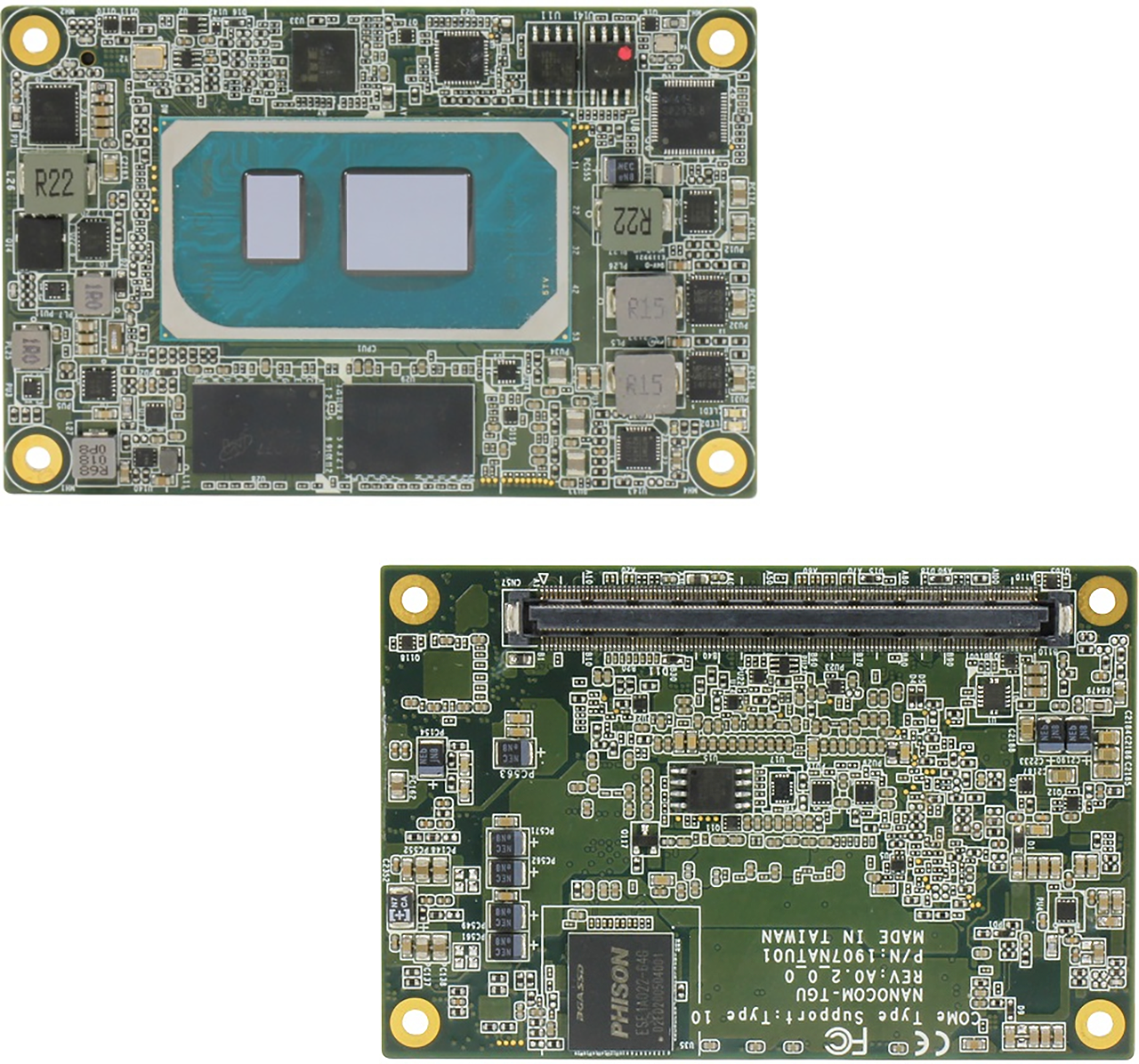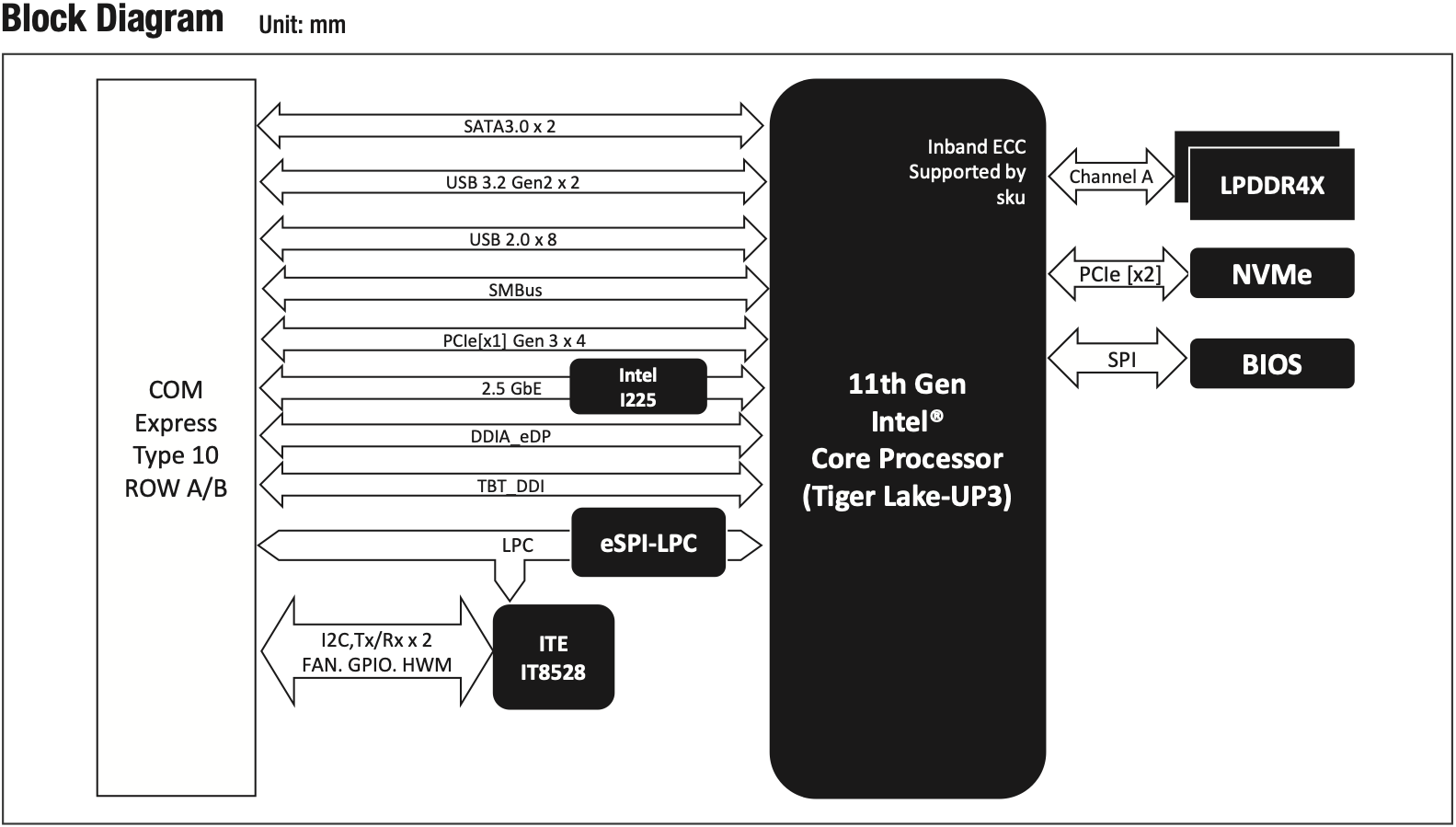Credit Card-Sized Tiger Lake Platform Launched: Four Cores & Xe Graphics
Aaeon launches an ultra-small Tiger Lake SBC for embedded applications.
Aaeon has launched one of the industry's first credit-card-sized platforms based on Intel's 11th Gen 'Tiger Lake-UP3' chips. Despite its tiny dimensions, the new NanoCOM-TGU single-board computer (SBC) offers everything that Intel's Tiger Lake can. That includes four high-performance cores and rather decent Iris Xe graphics, which is plenty of horsepower for the embedded computing target market.
Aaeon's NanoCOM-TGU COM Express Type 10 module comes with up to Intel's Core i7-1185G7E or down to Intel's Celeron 6305E to address both entry-level and premium applications.
The processor is mated with up to 16GB of LPDDR4x-4266 memory and up to a 256GB soldered-down NVMe SSD with a PCIe x1 interface. Depending on the exact SKU, the SBC will come with either a CPU cooler, a heat spreader, or just the board.
- Core i7-1185G7E: 4C/8T, 1.80/4.40GHz, 12MB cache, 96 EU, 15W
- Celeron 6305E: 2C/2T, 1.80GHz, 4MB cache, 48 EU, 15W

The NanoCOM-TGU measures only 3.31×2.17 inches (84×55 mm), yet its expansion and connectivity department is quite decent as it includes (via an internal header, of course) a 2.5 GbE port (Intel I225-LM), two display outputs (one embedded DisplayPort, one DDI), two SATA ports, PCIe expandability, one USB 3.2 Gen 2, one USB 2.0, I2Cm LPC, SMBUS, UART, and high-definition audio support.
Being aimed at embedded applications like aerospace, industrial, gaming, medical, military, and IoT, the NanoCOM-TGU is equipped with things like a watchdog timer and fTPM.

Aaeon's NanoCOM-TGU single-board computer is not expected to be available at mainstream retail outlets, so don't expect it to compete against the best motherboards for PCs. However, the tiny SBC could theoretically be used to build ultra-compact form-factor (UCFF) PCs, but it would be rather expensive.
Stay On the Cutting Edge: Get the Tom's Hardware Newsletter
Get Tom's Hardware's best news and in-depth reviews, straight to your inbox.

Anton Shilov is a contributing writer at Tom’s Hardware. Over the past couple of decades, he has covered everything from CPUs and GPUs to supercomputers and from modern process technologies and latest fab tools to high-tech industry trends.